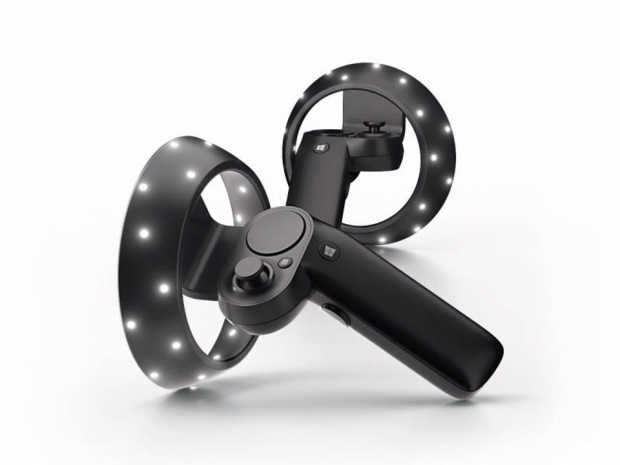From an initial perspective, the company’s Windows Mixed Reality controllers look similar to Oculus Touch and HTC Vive controllers. Unlike HTC’s cupholder-shaped tracking rings, Microsoft is using a vertically placed ring for each controller. Each includes its own side grip trigger and Windows button
The controllers will not require independent sensors to interact with the virtual world. Instead, they rely on the same inside-out tracking used by Microsoft’s HoloLens, which enables six-degrees of freedom (6DOF) without any extra room sensors. Connectivity to the PC happens with a single cable from the headset, eliminating the need for multiple wires and extra tangles.
As long as the headset’s sensors and cameras can “see” the controllers, they can be positioned exactly where a wearer’s hands are located in the real-world. The current sensor alignment allows tracking just beyond the camera field of view, but there is no indication by how much. With HoloLens, this isn’t exactly as wide as a wearer’s visible area, but close enough for a decent VR experience.
Partnering headset vendors will be designing, selling, and shipping these controllers. It is not clear whether there will be a single unified design for each unit. The variables will be left up to OEMs to decide, based on the same underlying sensors and button layout.




